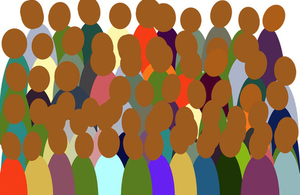A new cross-government policy initiative aims to tackle the ‘burning injustice’ of disability discrimination. To support this ambition ONS has pledged to develop a new data dashboard, bringing the key data into one location where the disparities affecting disabled people can be easily interpreted and monitored. Helen Colvin discusses the project and invites interested parties to help in its development.
If we want fully to understand the lives of disabled people in the UK, where do we start? Speaking directly with disabled people is crucial, of course, but it’s equally important to complement insights from lived experience with robust data.
The ONS currently publishes quarterly data on the number of disabled people in work in the UK. In England, the Department for Education can tell us about the attainment, absence and exclusion rates of school and college students with Special Educational Needs (SEN), and the Department for Transport publishes information about access to transport for people with mobility difficulties.
These are all good sources, but they measure different things. The ONS uses the definition of disability given in the Equality Act 2010, i.e. someone who has a long-term condition that limits their day-to-day activities. Other statistics have been designed for different purposes, so alternative measures, like the number of children and young people identified with SEN, or those with mobility difficulties, become the most relevant indicators.
In an ideal world, it would be great to see more harmonisation of the statistics about disabled people and a more thorough coverage of the indicators that say most about the quality of disabled people’s lives. The GSS is making progress here, but there are still gains to be made.
What’s also noticeable is that the data are all produced by different organisations and covers different geographies. This is especially true in a world where issues like health, education, housing and transport are devolved and different data providers collect data using their own systems and host their data on their own websites. Logical, yes, but not so easy for users to find or understand data in a consistent context.
So why does this matter? Producing statistics that measure disability against the Equality Act 2010 enable us to understand how far we are tackling the barriers that disabled people face in the workplace and wider society. This is important for holding government and wider society to account and identifying areas to take action. The UK has also signed up to the Sustainable Development Goals agenda of ‘leave no one behind’ which states that ‘every person should have a fair opportunity in life’, ‘people the furthest behind…will be prioritised’, and ‘every person counts and will be counted’.
The data that we do have relating to disabled people shows major disparities between their lives and the lives of non-disabled people. We know that at school, pupils identified with certain types of SEN (many of whom will also be disabled) are more likely to be absent or excluded and have lower attainment scores than their peers – although this varies with type of SEN.
In young adulthood, disabled people are more likely not to be in education, employment or training (NEET) and while the gap between employed disabled and non-disabled people has been narrowing in recent years, disabled people are currently 29.9 percentage points less likely to be in employment than non-disabled people.
Disabled people also face other disparities, including being more likely to be a victim of domestic abuse and less likely to access the internet than non-disabled people. With these kinds of experiences, it’s unsurprising that disabled people report feeling more lonely than non-disabled people.
The Prime Minister has announced a new cross-government approach to tackle the barriers that disabled people face across a wide range of aspects of their lives. To support effective Government action, we intend to develop a new data dashboard, collating data on outcomes for disabled people into one location where disparities can be easily interpreted and monitored. Through providing impartial, accessible and coherent statistics we aim to inform sound policy decisions for tackling the barriers that disabled people face.
ONS will work closely with providers and users of statistics about disability to improve appropriate harmonisation of data collection and promote routine disaggregation of data by disability. By mobilising the power of data, we can deliver a clear, accessible and coherent understanding of the experiences of disabled people and enable Government and wider society to make better decisions and improve lives.
Experiences of disability can vary greatly, but by bringing data together, we will help understand these differences and explore how intersections between different aspects of life affect outcomes. We want to hear from disabled people, advocacy groups and users as we develop this work – please get in touch with us at life.course@ons.gov.uk
Helen Colvin is Head of Census, Lifecourse and Disability Analysis at ONS
